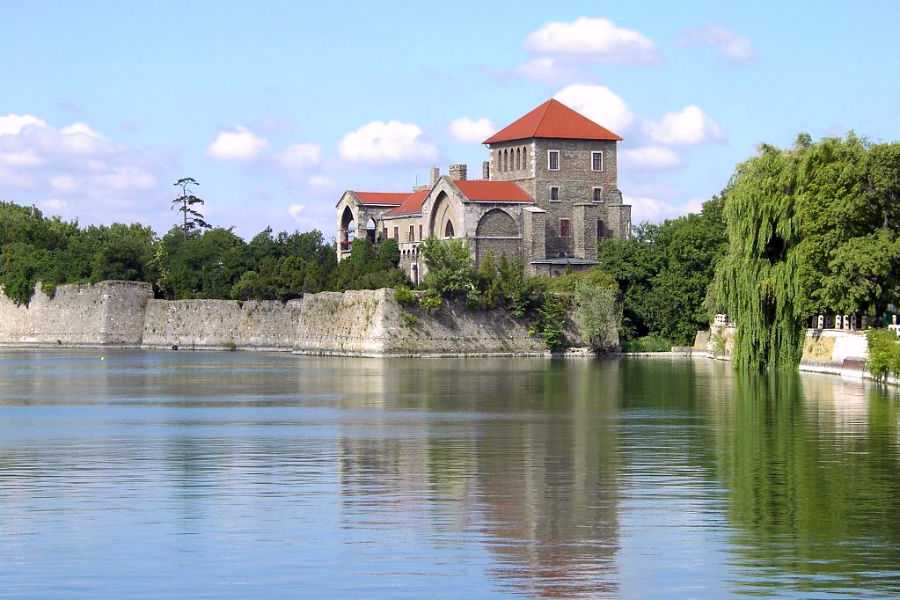The ranking was based on the number of times the phrase "beautiful views" appeared in reviews.Continue reading
Tata, in Komárom-Esztergom County, northwestern Hungary, a town in a picturesque setting, is famous for its many monuments and historical sights. It is the “city of waters,” where the natural and built environment intertwine reports Magyar Nemzet.
In the center of the town, on the shore of the Old Lake (Öreg tó), stands Hungary’s most important water castle, but it is also the place where the arrival of wild geese is celebrated in autumn, as the lake is a special bird resting place.
However, it is not well-known that the highest point of Tata, a part of the Calvary Hill, is a curiosity, where you can take a real journey back in time to the geological past.
Its geological uniqueness also lies in the fact that rocks from all three periods of the Mesozoic Era (Triassic, Jurassic, and Cretaceous) can be found in this small area.

The Old Lake and the castle. Photo via www.termalfurdo.hu
Arriving in Tata, you can see from a distance the town’s 166-meter-high Calvary Hill and the chapel, built by Antal Schweiger around 1770, standing on a steep white rock spur. The chapel and the lookout tower once functioned as a beer foundry, and commemorates the memory of Jakab Fellner, who played a major role in shaping the Baroque townscape. To the east of the chapel is the 500 cubic meter water tower, built in 1968 to supply the town with water.
Part of the hill has been a special geological nature reserve since 1958, because of its geological and archaeological value. At the foot of the hill, visitors are greeted by a huge, ornate Szekler gate, built in 2000 by Cs. Ernő Kiss, a woodcarver and folk artist.
This gate leads into the Geological Garden, which has been under the management of Eötvös Loránd University since 1994.
As they say in their brochure, it was opened in 1976 to the public interested in natural history. Since 1991, it has also been an open-air Geological Museum, where Hungary’s most common igneous rocks can be found. The area was a quarry until 1979, and is home to the building stones used for the Tata Castle. The nature reserve, offering unique natural and cultural history attractions, features a four-hectare landscaped, abandoned quarry where you can explore hundreds of millions of years of marine sedimentary rocks, as well as botanical, cultural, and mining (prehistoric flint mining) attractions.

The view from the Tata Calvary Hill. Photo via Facebook/Pethő Csaba
It is a special experience to discover the rocks along the paths of one of the country’s most beautiful open-air museums, where the geological attractions are complemented by a botanical collection of some 600 plant groups.
Calvary Hill is the only place in the city of Tata and its surrounding area where solid rocks suitable for building are being excavated.
In the quarries and on the cleared rock surfaces, the geological evolution of the area can be traced.
Mining has revealed the Megalodus Cave, a cave of thermal karst origin that formed along a fracture zone. It takes its name from the shell remains carved out of its ceiling. The cave is highly protected and is not open to the public. In the geological park, you can see not only the rocks that occur in the area, but also the huge blocks and columns of rock at the bottom, showing the typical rock types of our country.
Via Magyar Nemzet, Featured image via Facebook/Krisztina Ferenc